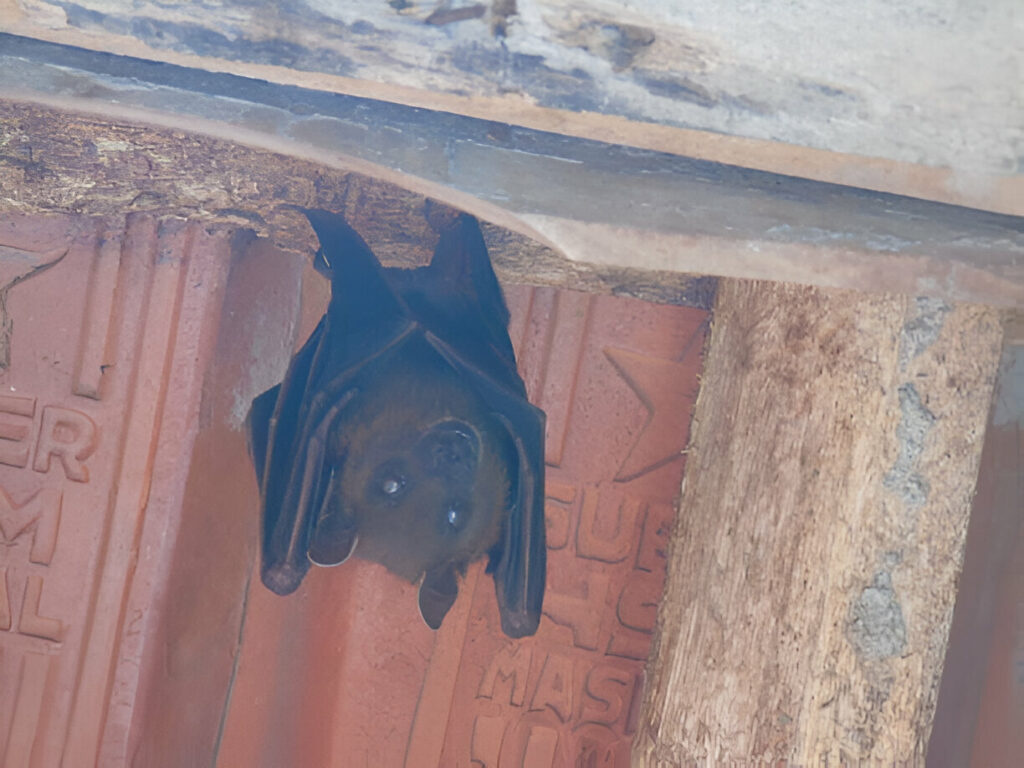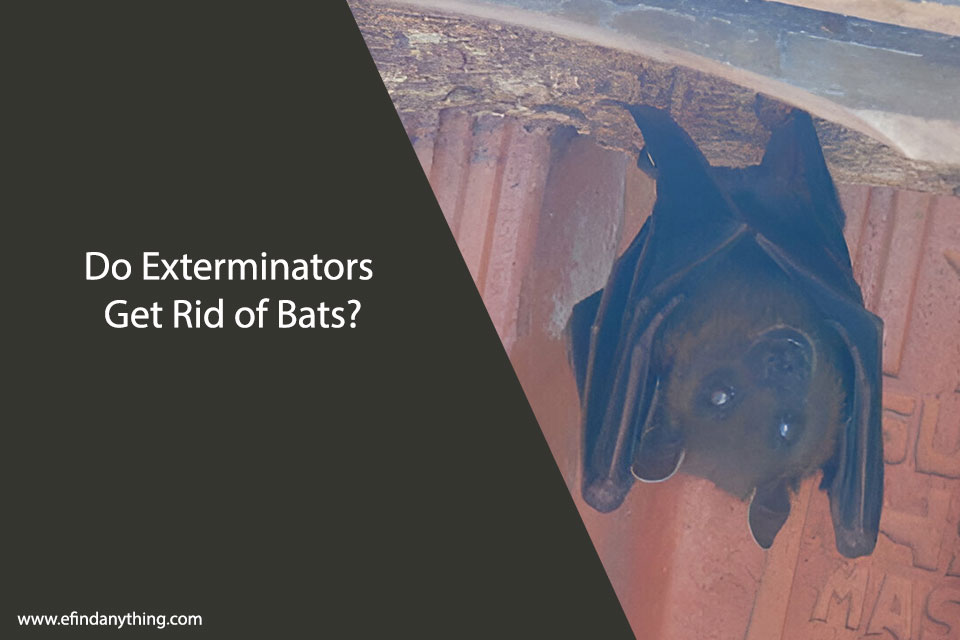Bats are essential creatures in the ecosystem, playing a vital role in controlling insect populations and pollinating plants. However, when they invade homes or businesses, they can pose health risks and cause structural damage. Homeowners who find themselves dealing with a bat infestation may wonder: Do exterminators get rid of bats? The answer is yes, but not in the same way they handle insects or rodents. Due to laws protecting many bat species, exterminators use humane and legal methods to remove and exclude bats rather than exterminating them.

Table of Contents
Understanding Bat Infestations
Bats often enter buildings through small openings in attics, chimneys, vents, and gaps in roofing. They seek shelter in warm, dark areas where they can roost during the day. A bat infestation can be identified through signs such as:
- Noises at Night – Bats are nocturnal, so you may hear scratching, squeaking, or flapping sounds in the attic or walls at night.
- Droppings (Guano) – Bat droppings, known as guano, accumulate near roosting sites and have a strong ammonia odor.
- Stains Around Entry Points – Greasy stains around holes or gaps in walls or roofing indicate frequent bat activity.
- Unusual Odors – The presence of guano and urine can create a strong, unpleasant odor in the home.
- Sightings of Bats – If you frequently see bats flying around your home at dusk or dawn, they may be roosting inside.
Are Bats Dangerous?
While bats are generally not aggressive, they can pose health risks to humans and pets. The primary concerns include:
- Rabies – Bats are known carriers of rabies, a fatal disease transmitted through bites or scratches.
- Histoplasmosis – A respiratory disease caused by fungal spores found in bat droppings, which can become airborne and infect humans when inhaled.
- Structural Damage – Accumulated guano and urine can damage insulation, wood, and drywall, leading to costly repairs.
Legal Protection for Bats
Many bat species are protected by law due to their ecological importance. In the United States, the Endangered Species Act and state wildlife regulations prohibit the killing of bats. Instead, humane removal and exclusion methods must be used. Exterminators are trained to comply with these laws while effectively addressing infestations.
How Exterminators Remove Bats
Professional pest control companies follow a multi-step process to safely and legally remove bats from a property. The steps include:
1. Inspection and Identification
Exterminators conduct a thorough inspection to identify the species, entry points, and the extent of the infestation. This helps them develop a customized removal plan.
2. Exclusion Methods
Exclusion is the most effective way to remove bats. Exterminators use one-way exclusion devices, such as bat valves or netting, which allow bats to leave but prevent them from re-entering. This method ensures that bats vacate the premises without being harmed.
3. Sealing Entry Points
Once the bats have left, exterminators seal all entry points to prevent future infestations. This may include repairing gaps in roofing, installing chimney caps, and reinforcing vents.
4. Cleaning and Decontamination
After removal, professionals clean and sanitize the affected areas to eliminate guano, urine, and any lingering odors. This step is crucial to prevent health hazards like histoplasmosis.
5. Preventative Measures
To deter bats from returning, exterminators may recommend installing bat houses nearby to provide an alternative roosting site. Additionally, bright lighting and ultrasonic deterrents can make areas less attractive to bats.
Cost of Bat Removal Services
The cost of bat removal varies based on factors such as the infestation size, property size, and location. On average, homeowners can expect to pay:
- Inspection Fee – $100 to $300
- Exclusion and Sealing – $300 to $1,500
- Cleanup and Decontamination – $500 to $2,500
In total, bat removal services typically range from $500 to $3,500. Severe infestations requiring extensive repairs and decontamination may cost more.
DIY Bat Removal vs. Professional Services
While some homeowners attempt to remove bats on their own, professional removal is highly recommended. Here’s why:
Pros of Hiring an Exterminator
- Legal Compliance – Professionals follow wildlife protection laws and use humane methods.
- Effective and Safe Removal – Experts ensure complete removal and prevent reinfestation.
- Health Protection – Professional cleaning reduces exposure to harmful diseases.
- Long-Term Solutions – Sealing entry points and deterrent strategies help prevent future issues.
Cons of DIY Bat Removal
- Legal Risks – Harmful removal methods may violate wildlife protection laws.
- Incomplete Removal – Bats may find alternative entry points if exclusion is not done properly.
- Health Hazards – Improper handling of bat droppings can lead to disease exposure.
How Bats Benefit the Environment
While bats can be problematic when they invade homes, they play an essential role in nature. Some of their benefits include:
- Pest Control – Bats eat large quantities of insects, including mosquitoes, reducing the need for chemical pesticides.
- Pollination – Some bat species pollinate plants, helping ecosystems thrive and supporting fruit production.
- Seed Dispersal – Bats contribute to forest regeneration by spreading seeds in their droppings.
Signs of a Recurrent Bat Problem
Even after removal, bats may return if conditions remain favorable. Signs that bats are trying to reinfest your home include:
- New droppings or odors in previously cleaned areas
- Nocturnal noises similar to previous infestations
- Bats seen flying near sealed entry points
If you notice these signs, consult a professional to reassess and reinforce exclusion measures.
Final Thoughts
While exterminators do get rid of bats, they do so using humane and legally compliant exclusion methods rather than extermination. If you suspect a bat infestation in your home, professional bat removal services provide safe, effective, and long-term solutions. By taking proactive measures, homeowners can prevent future infestations while respecting the important ecological role of bats.
FAQ
1. Can exterminators kill bats?
No, exterminators cannot kill bats due to legal protections. They use humane exclusion methods to remove them safely.
2. How long does bat removal take?
The process typically takes a few days to a few weeks, depending on the infestation size and the time it takes for bats to leave through exclusion devices.
3. Will bats return after removal?
If entry points are not properly sealed, bats may return. Professional services include sealing and deterrents to prevent reinfestation.
4. Can I remove bats myself?
DIY bat removal is not recommended due to legal restrictions and health risks. Professional exterminators ensure safe, legal, and effective removal.
5. What time of year is best for bat removal?
Late summer and early fall are ideal, as baby bats (pups) are mature enough to leave. Removing bats during maternity season (spring/summer) is often restricted by law.





